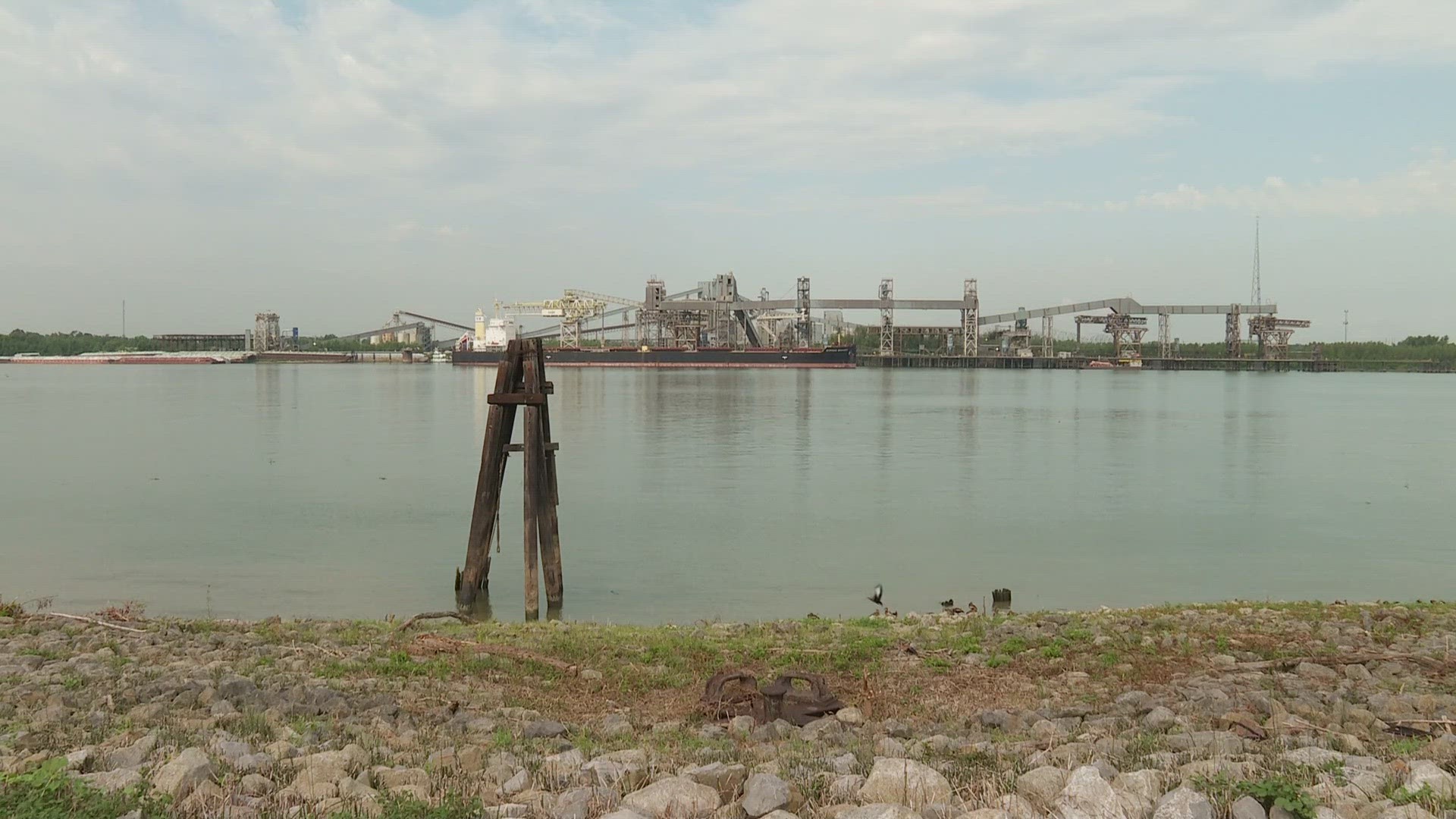NEW ORLEANS — The Army Corps of Engineers says that salt water wedge coming up the Mississippi River from the Gulf of Mexico is now a top priority.
Friday morning, they gave an update on their plan of action to protect drinking water.
Officials say it is a situation that's been evolving. The concern now is that levels of rainfall up in the Ohio Valley are forecast to stay below average.
"Based off the National Weather Service forecast that has recently come in, we see that flows on the Mississippi River could reach as low as 130,000 cubic feet per second by the end of the current 28-day forecast period. The lowest recorded flows occurred in 1988. When they reached 120,000 cubic feet per second. By context, that's nearly half of the flow going across the Bonnet Carré Spillway when it's in full operation," U.S. Army Corps of Engineers Colonel Cullen Jones said.
No rain is forecasted in the valley for the next at least the next month.
When river levels fall this low, it cannot stop saltwater from coming up the Mississippi River from the Gulf of Mexico.
Col. Jones said that when levels were this low in 1988, the saltwater wedge made its way all into Kenner.
The wedge could potentially reach the French Quarter if nothing is done, but officials plan to take more actions.
In July, the Corps built an underwater sill to slow the saltwater wedge, but it could be overtopped in the coming days. Officials are planning to use dredging to raise the sill 20 feet while not affecting ship commerce. They are also bringing fresh water on barges to reduce salt water intake at purification plants and special machines will also be brought in to take salt out of the water.
Plaquemines Parish President W. Keith Hinkley says about a million and a half liters of water to our residents has been distributed to the 2000 residents in the parish.
The saltwater wedge could overtop the sill and impact the Belle Chasse water intake by October 3.
"Hopefully, this will slow down and stop. Because when we have to start supplying water to just on the Belle Chasse side of things, there are 20,000 residents right there. And then when it goes to St. Bernard, it's countless residents here," President Hinkley said.
President Hinkley spoke about the issues that residents in the parish are facing.
"If you think about Plaquemines Parish, the further south are our base flood elevations, the buildings are all there, the schools are 20 to 30 feet up in the air. So some of our problems are, and what we've been dealing with this year is because of the drought, a lot of breaks in the lines, and when that happens, your water pressure drops down.
One facility being impacted is Ben Becnel's citrus farm. Becnel pulls water from the river every day to water his trees. "He uses 120,000 gallons of water a day; he's got $8 million in trees on his property right there," Hinkley said.
The parish is working to bring in water tanks to help the farm.
► Get breaking news from your neighborhood delivered directly to you by downloading the new FREE WWL-TV News app now in the IOS App Store or Google Play.

